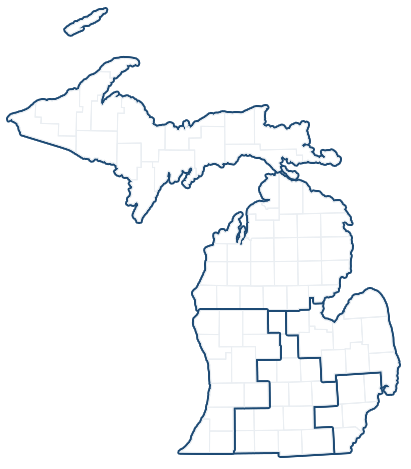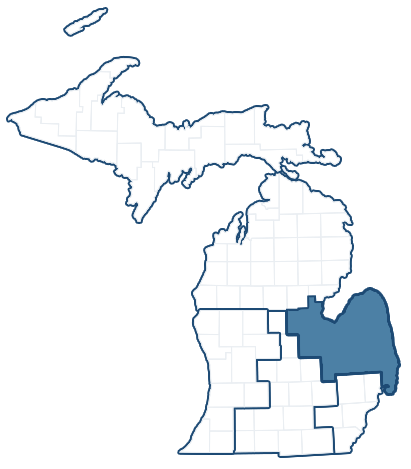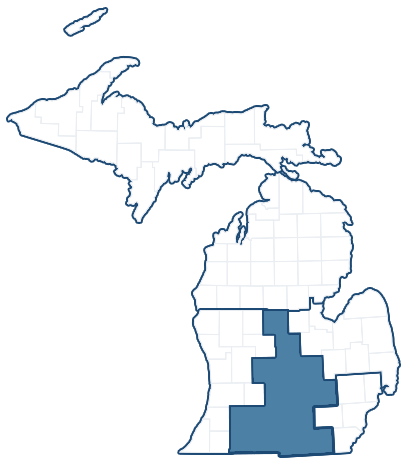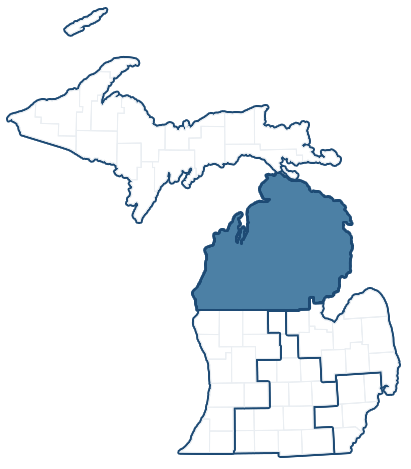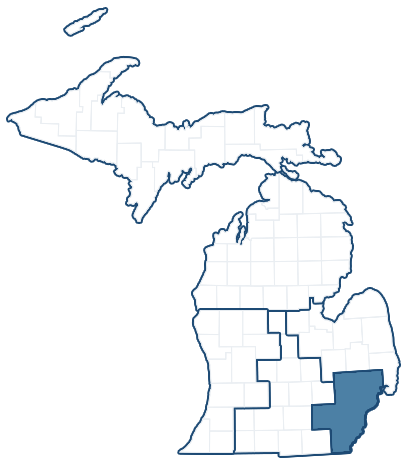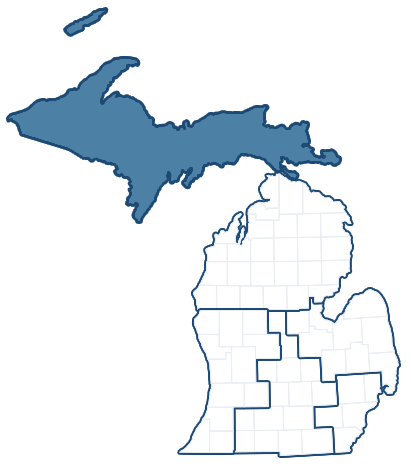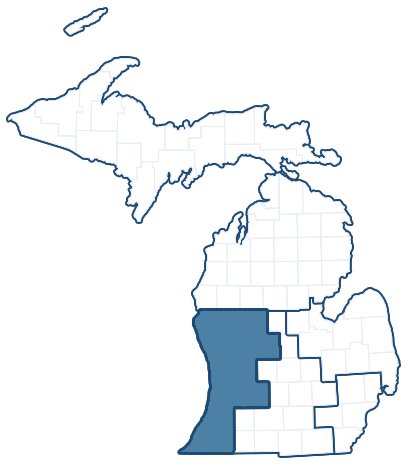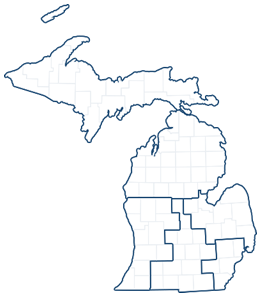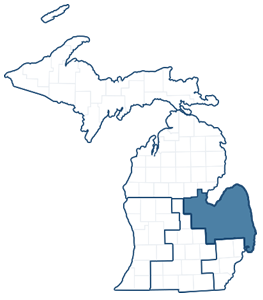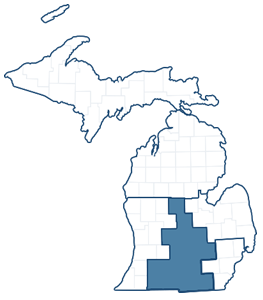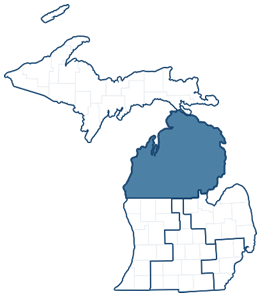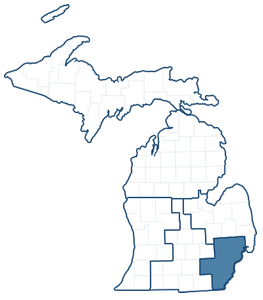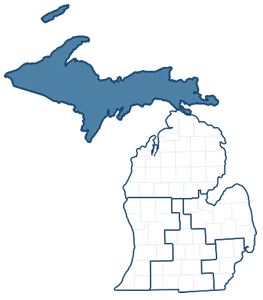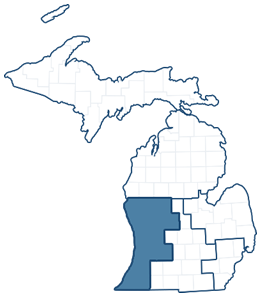Senator Stabenow Highlights Great Lakes Restoration Success Stories Across Michigan, Importance of Federal Funding
Thursday, August 24, 2017This month, U.S. Senator Debbie Stabenow is highlighting Great Lakes Restoration Initiative (GLRI) success stories throughout Michigan and the importance of federal funding to protect our lakes and waterways. Stabenow today joined Sheila Stamiris, Executive Director of the Frankenmuth Downtown Development Authority, Mike Kelly, Director of the Saginaw Bay Watershed Initiative Network, and Randy Claramunt, Michigan Department of Natural Resources Fish Biologist, to recognize the completion of the Frankenmuth Fish Passage project. Stabenow authored the GLRI in 2010 and is leading the bipartisan effort to stop proposals to eliminate funding for the Initiative next year.
The Frankenmuth Fish Passage project received $2.3 million through GLRI to reconnect fish in the Saginaw Bay to more than 73 miles of important spawning areas. The project benefits Frankenmuth’s local economy by supporting tourism and recreation.
“One in five Michigan jobs are tied to water. It is more important than ever to continue investing in the health of our Great Lakes and waterways,” said Senator Stabenow, Co-Chair of the bipartisan Senate Great Lakes Task Force. “This successful project here in Frankenmuth is an excellent example of how Great Lakes funding is helping more Michigan families and visitors enjoy boating, fishing, kayaking, and canoeing.”
“As a tourism and employment center, Frankenmuth is blessed with resources,” said Sheila Stamiris, Director of the Frankenmuth Downtown Development Authority. “While beautiful, the Cass River was overlooked as an asset. With the assistance of funding through the Great Lakes Restoration Initiative, the community was able to remove an environmental obstacle to create a new tourism destination and provide a new opportunity for public access to the river. The GLRI leveraged investment from the City, from local foundations and businesses to build a winning model that marries environment and economy – all for the better good.”
“The Great Lakes Restoration Initiative has been a key factor in major environmental restoration and protection projects over the last few years across the Saginaw Bay Watershed,” said Mike Kelly, Director of the Saginaw Bay Watershed Initiative Network Project. “Funding from GLRI has allowed for the removal of dams, including the one in Frankenmuth, and allowed for the reconnection of hundreds of miles of streams which has been important for wildlife and also recreation. Projects such as those, as well as other major restoration efforts, are not only key to our environmental health, but are also important to our regional economy.”
According to the University Research Corridor, more than 700,000 Michigan jobs, one in five in the state, are tied to water. GLRI is critical to cleaning up our Great Lakes, beaches, and waterways for swimming, boating, and fishing; fighting invasive species like Asian carp, and protecting our Michigan way of life. Michigan projects have received more than $600 million in funding from the GLRI since its establishment. Michigan has an estimated 2,850 miles of coastal water trails as well as an estimated 1,280 miles of inland water trails. Our canoe and kayak industry annually contributes $140 million to our state’s economy.
Frankenmuth Fish Passage Project Background
Fish species like walleye and lake sturgeon use rivers and tributaries for spawning before returning to the Saginaw Bay, where they spend most of their adult lives. Before the Frankenmuth Fish Passage project was completed, the Cass River Dam prevented these fish from accessing important spawning areas, leading to a significant decline in fish population in the Saginaw Bay.
Great Lakes Aquatic Connectivity and Infrastructure Program
In addition to leading the effort in the Senate on fully funding the GLRI, Senator Stabenow is also championing legislation to protect and restore our recreational fisheries. In June, she introduced the Great Lakes Aquatic Connectivity and Infrastructure Program Act (S. 1332) to improve Great Lakes fisheries and encourage habitat restoration by repairing and replacing aging dams, culverts, and roads. There are thousands of these structures across the Great Lakes Basin that currently inhibit the movement of fish populations. Great Lakes states and tribal governments will be able to recommend grant projects to the U.S. Fish and Wildlife Service to expand fish access to waterways and work to prevent the spread of invasive species when addressing aging infrastructure.
Next Article Previous Article



